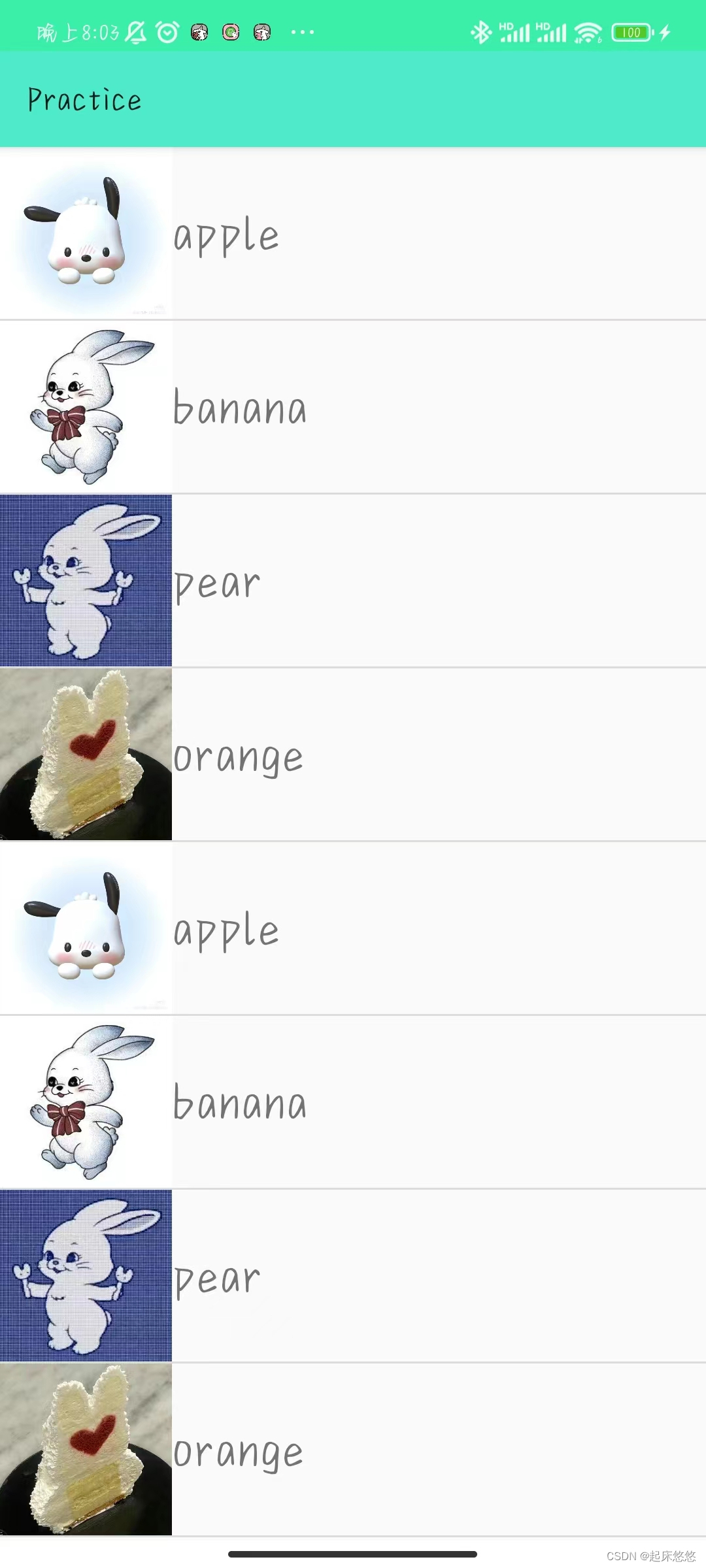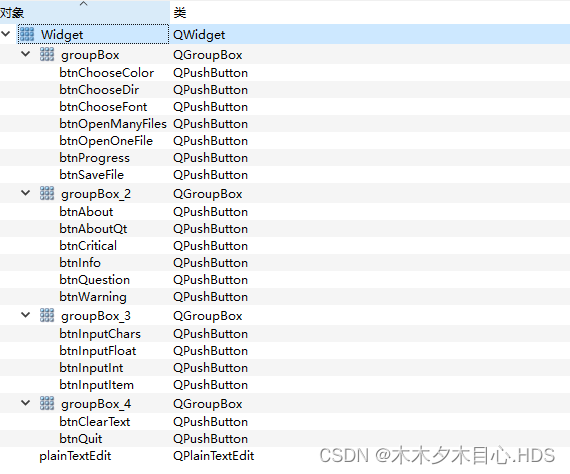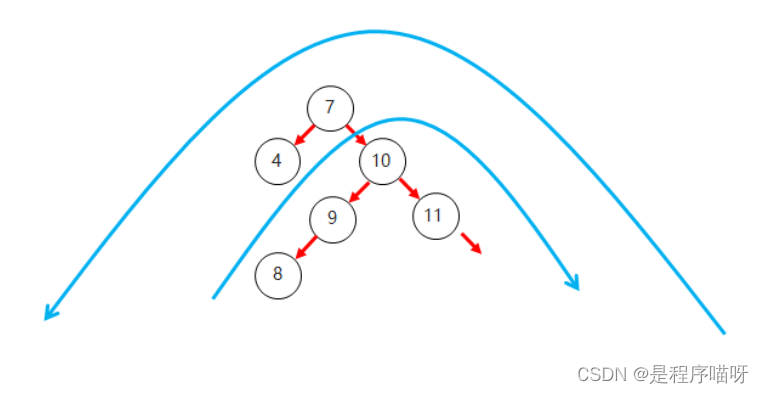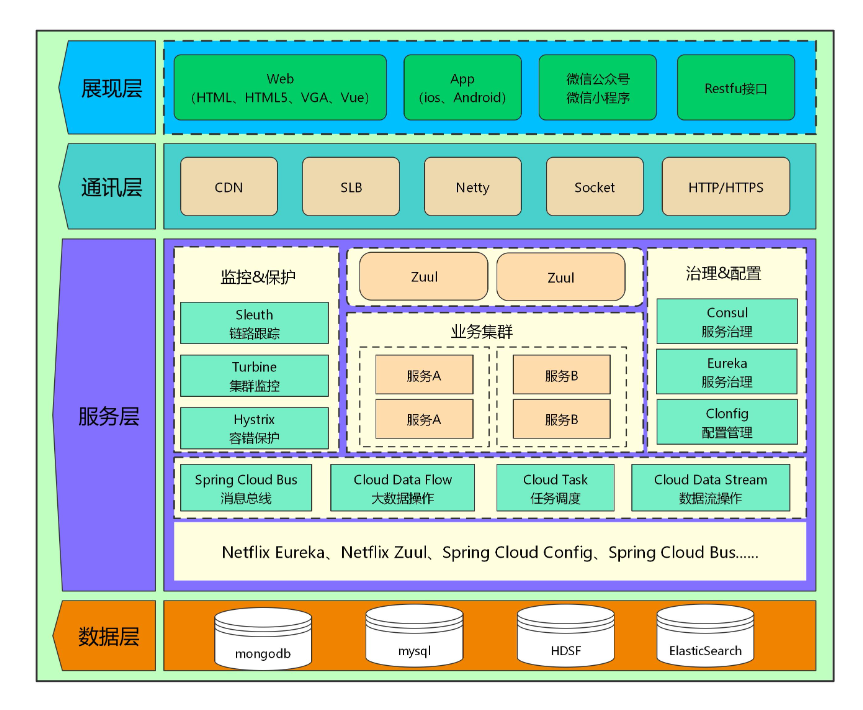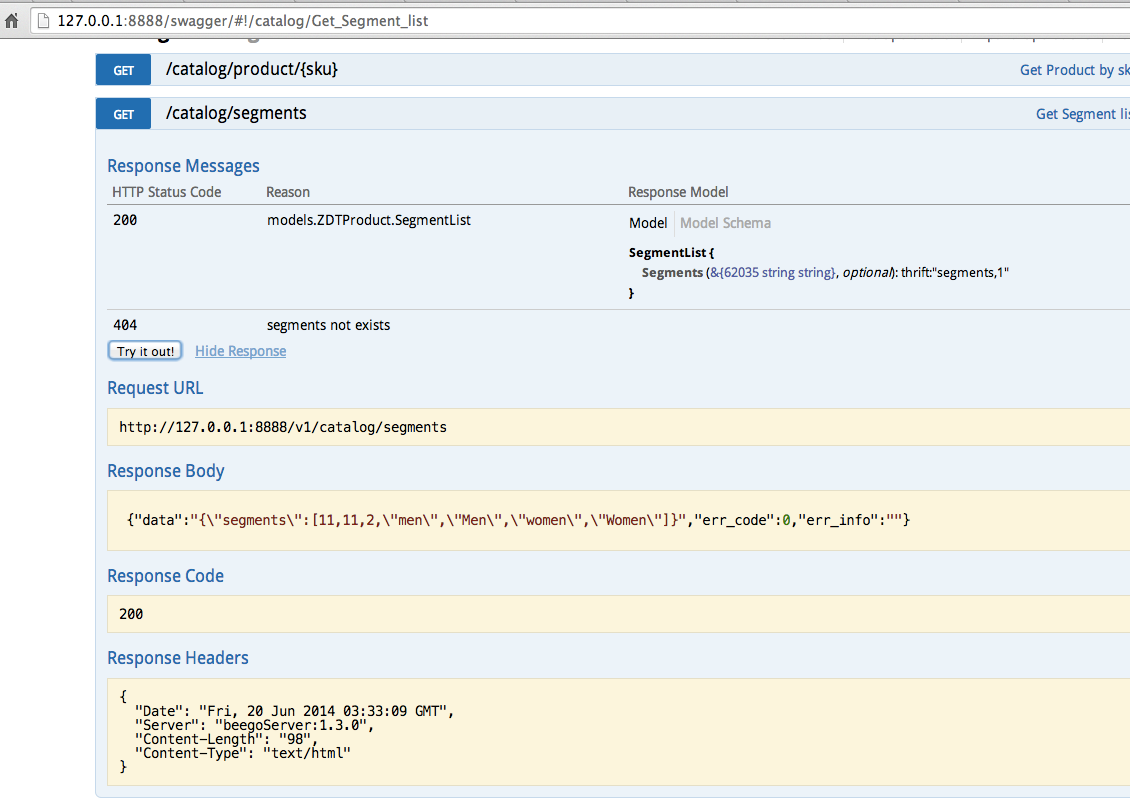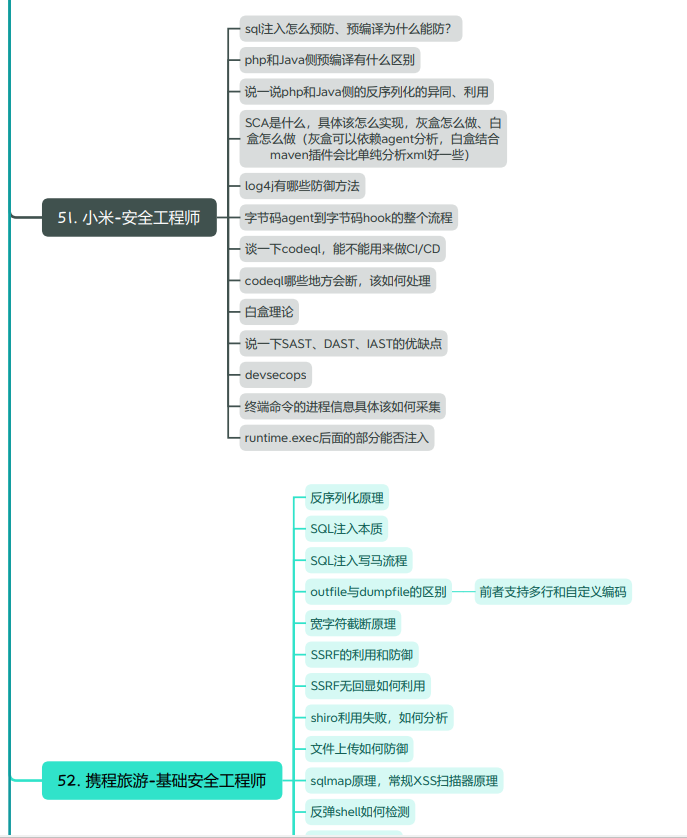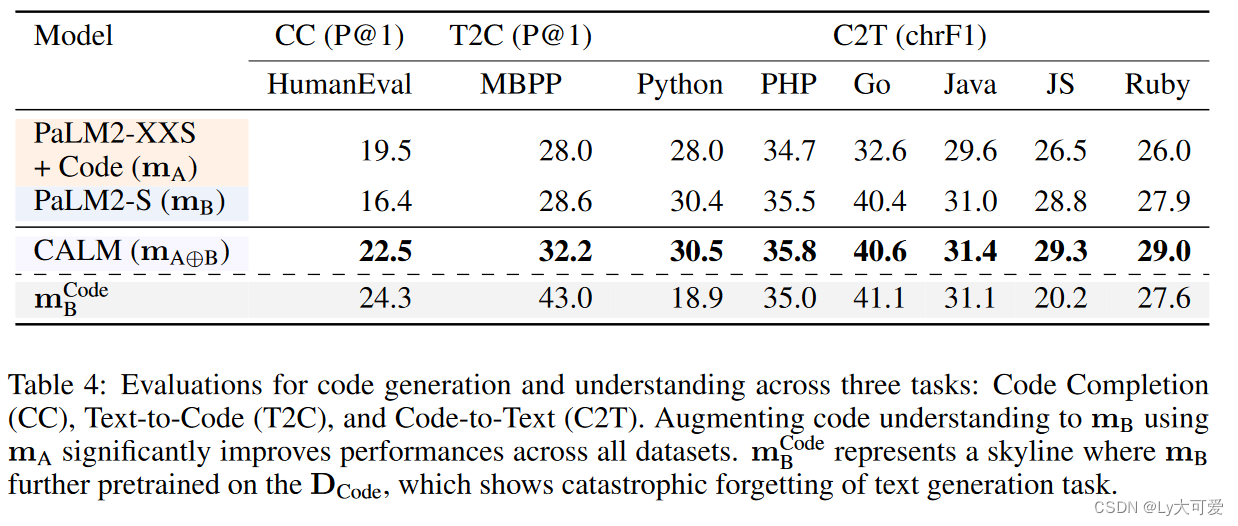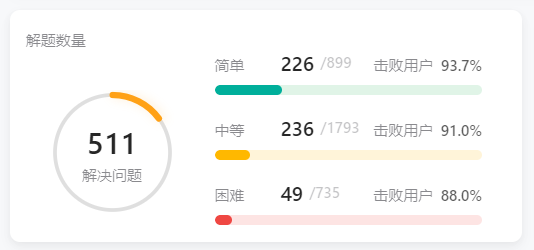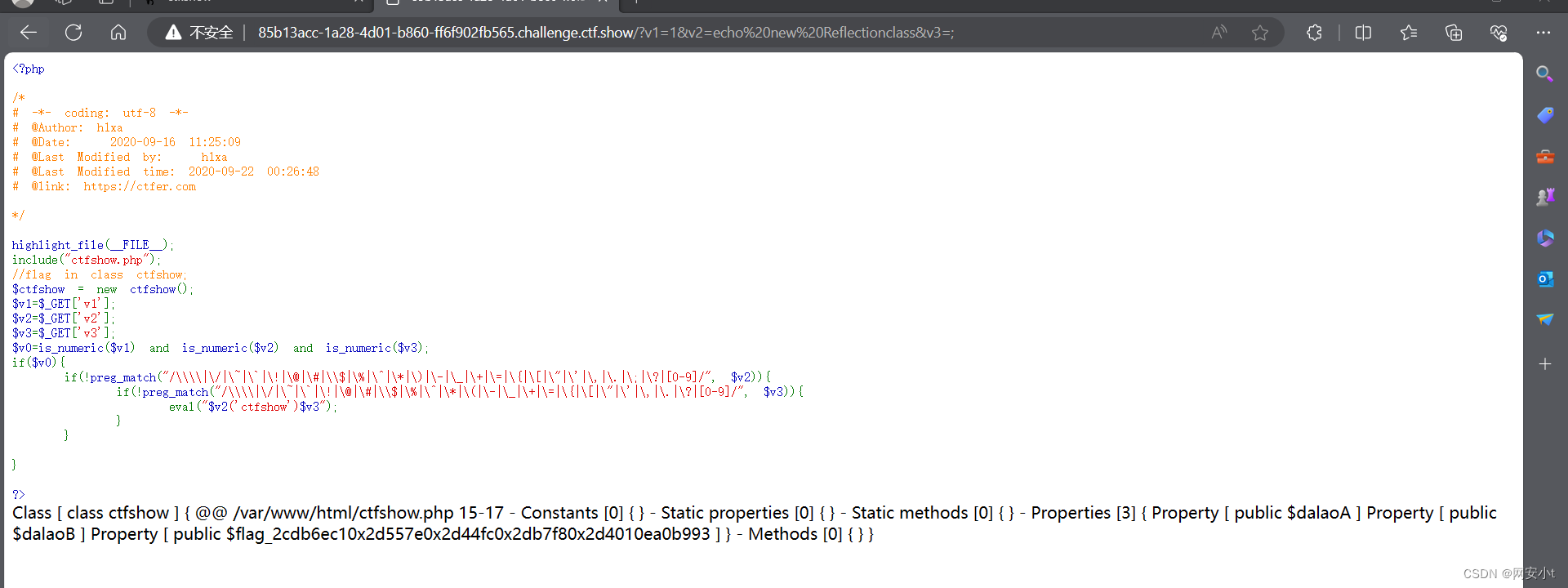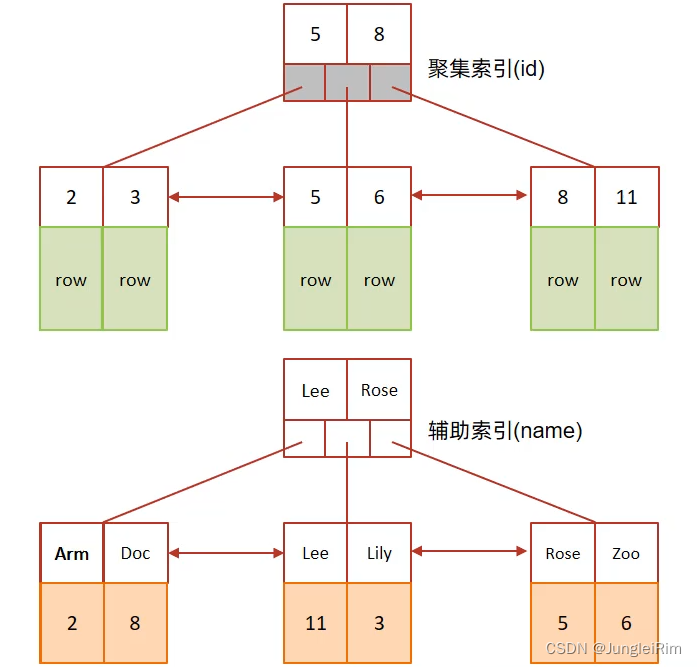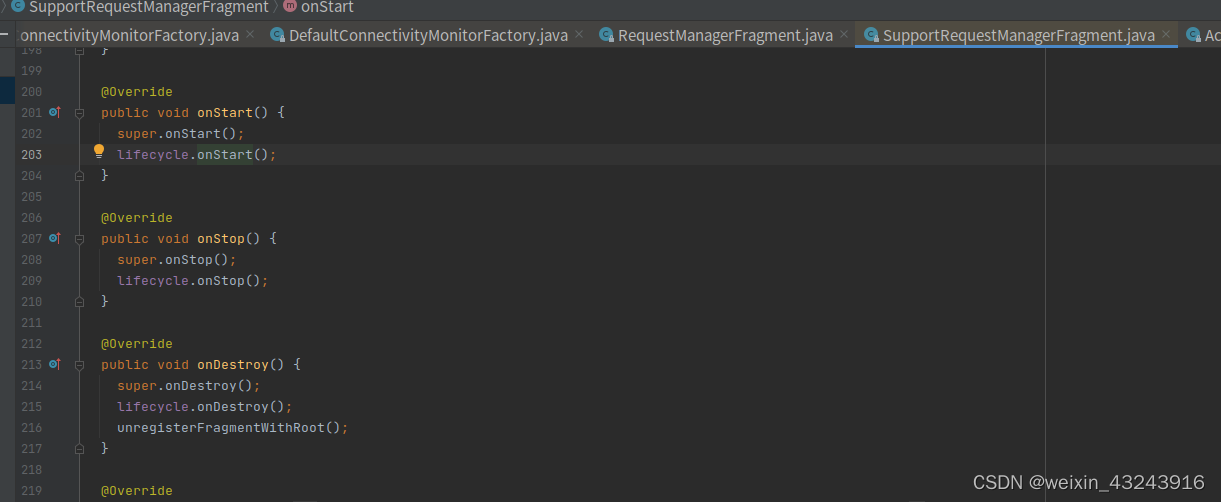一、DemonSet的介绍
1、什么是DemonSet
DaemonSet 控制器是用来保证在所有节点上运行一个 Pod 的副本当有节点加入集群时, 也会为他们新增一个 Pod。 当有节点从集群移除时,这些 Pod 也会被回收。删除 DaemonSet 将会删除它创建的所有 Pod。
简而言之:
pod不会因为node的故障的转移而转移,pod固定在指定的node的work节点中
DemonSet跟Deployment的不同是,Deployment是可以在不同的node进行故障漂移
2、DemonSet的典型用法
- 在每个节点上运行集群存储守护进程,如:Gluster、Ceph在每个节点上运行日志收集守护进程,如:fluentd、FilebeatLogstash
- 在每个节点上运行监控守护进程,如: Prometheus NodeExporter
- 在每个节点上运行网络插件为Pod提供网络服务,如: flannel、calico
3、DemonSet的编写
DaemonSet 是标准的API资源类型,它在spec字段中嵌套字段有selector、tempalte,与Deployment用法基本相同,但DaemonSet 不管理 Replicas,因为 DaemonSet不是基于期望的副本数,而是基于节点数量来控制Pod数量
4、DemonSet的使用示例
apiVersion: apps/v1
kind: DaemonSet
metadata:
name: nginx-ds
namespace: default
spec:
selector:
matchLabels:
app: nginx-ds
template:
metadata:
labels:
app: nginx-ds
spec:
containers:
- name: nginx-ds
image: nginx:1.16
ports:
- name: http
containerPort: 80
livenessProbe:
tcpSocket:
port: 80
initialDelaySeconds: 5
livenessProbe: # 就绪 监听80端口,如果80不存在则重启
httpGet:
path: '/'
port: 80
scheme: HTTP
initialDelaySeconds: 5
查看和删除,daemonset还会在现在的node创建pod
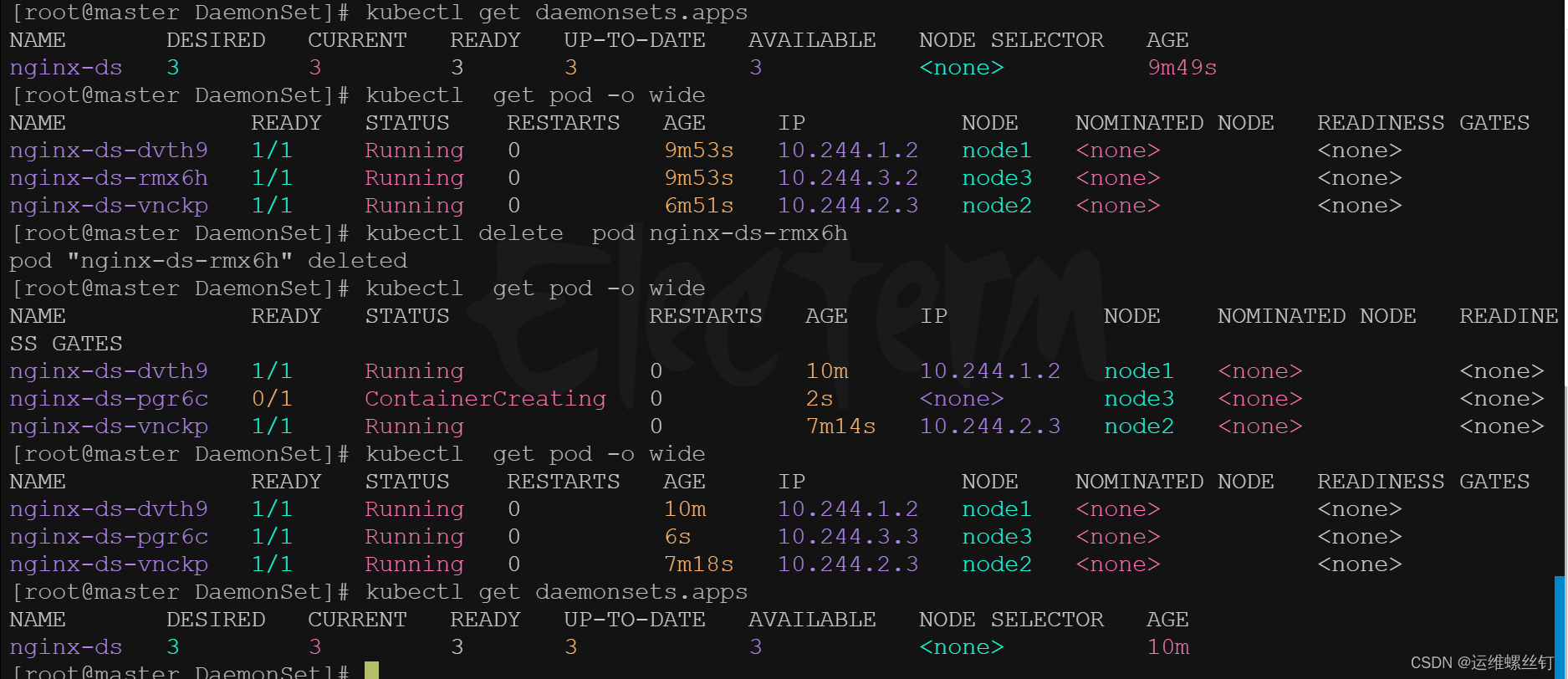
5、Daemonset采用节点标签进行部署
- 实验一:
给DamonSet只做节点标签,node打了标签的才会创建pod
apiVersion: apps/v1
kind: DaemonSet
metadata:
name: nginx-ds
namespace: default
spec:
selector:
matchLabels:
app: nginx-ds
template:
metadata:
labels:
app: nginx-ds
spec:
nodeSelector: #节点标签选择器
type: ssd #节点标签,在node上打的标签
containers:
- name: nginx-ds
image: nginx:1.16
ports:
- name: http
containerPort: 80
livenessProbe:
tcpSocket:
port: 80
initialDelaySeconds: 5
livenessProbe: # 就绪 监听80端口,如果80不存在则重启
httpGet:
path: '/'
port: 80
scheme: HTTP
initialDelaySeconds: 5

- 从查看结果看,并没有进行创建,因为没有node服务标签选择器的要求
- 查看节点标签
kubectl get node --show-labels

- 给节点打标签
kubectl label nodes node1 type=ssd
- 查看标签
kubectl get node --show-labels | grep node1
kubectl describe node node1 ##查看labels字段
kubectl describe node node1 | grep -A 5 Labels
kubectl label nodes node1 node2 type=ssd ## 连续给两个节点进行打标签

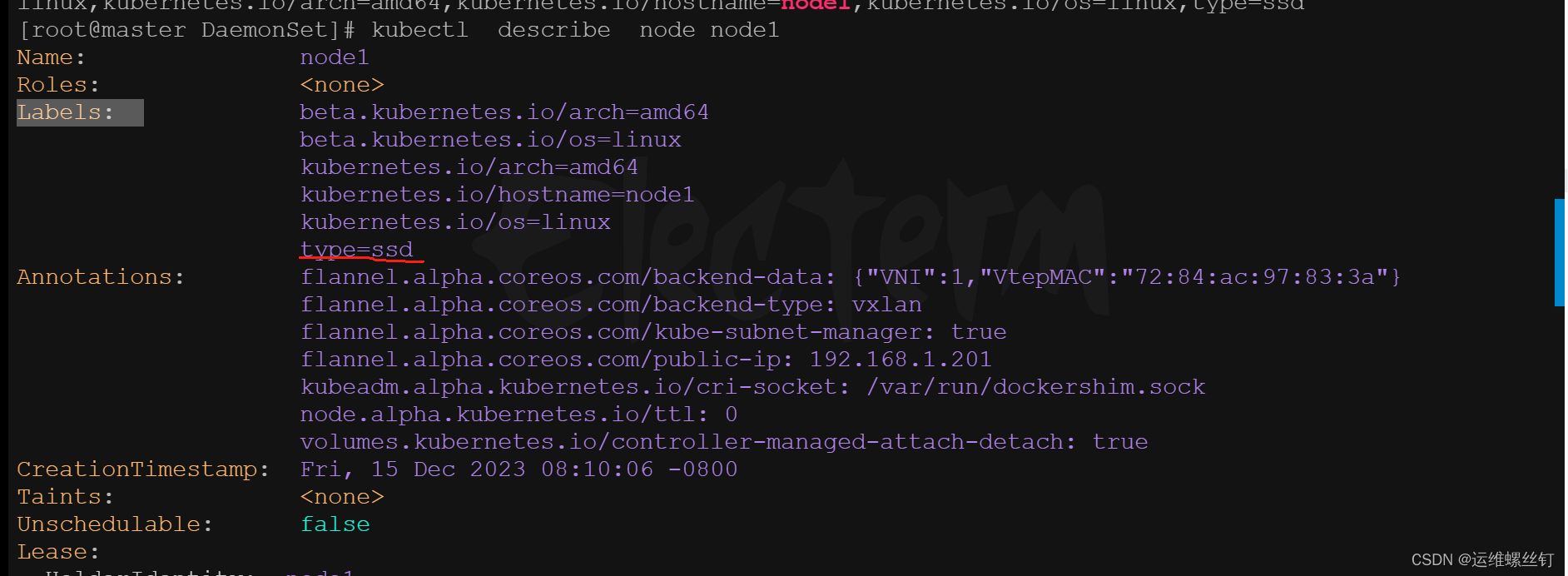

- 查看pod创建结果
kubectl get pod -o wide ## 查看pod创建在node节点中,符合场景要求
kubectl get daemonset -o wide

- 删除label标签
方法一:
kubectl label nodes node1 type-
6、DaemonSet示例二 DaemonSet部署node_exporter
1.为每个节点都运行一份 Node_exporter,采集当前节点的信息:
apiVersion: apps/v1
kind: DaemonSet
metadata:
name: node-exports
namespace: default
spec:
selector:
matchLabels:
app: node-exporter
template:
metadata:
labels:
app: node-exporter
spec:
hostNetwork: true ##共享主机网络
hostPID: true ##获取主机的PID
containers:
- name: prometheus-node-exporter
image: prom/node-exporter:v0.18.0
ports:
- name: node-ex-http
containerPort: 9100
hostPort: 9100
##存活探测和就绪探测
livenessProbe:
tcpSocket:
port: node-ex-http ##存活探测,探测port的name其实就是探测端口9100
initialDelaySeconds: 5 ##存活探测时间为5秒
readinessProbe:
httpGet:
path: '/metrics' ## 就绪探针,这是一个固定的接口
port: node-ex-http ## 就绪探针探测port的name其实就是探测端口9100
initialDelaySeconds: 5 ## 就绪探针时间为5秒
- 查看相关信息
kubectl get daemonsets ##查看daemonset创建的响应信息
kubectl describe daemonsets.apps node-exports ## 查看daemonset详情信息
kubectl get pod -o wide
- 测试
curl -s 192.168.1.201:9100/metrics | grep load15 ## 15分钟的负载信息
也可以使用浏览器进行访问,访问默认的9100端口
7、DaemonSet的更新策略
DaemonSet也支持更新策略,它支持 OnDeLete 和 RollingUpdate两种
- 0nDeLete: 是在相应节点的Pod资源被删除后重建为新版本,从而允许用户手动编排更新过程。
- RollingUpdate: 滚动更新,工作逻辑和Deployment滚动更新类似;
1、DaemonSet的更新策略——RollingUpdate
apiVersion: apps/v1
kind: DaemonSet
metadata:
name: node-exports
namespace: default
spec:
minReadySeconds: 10 ## 更新时间,默认是0秒
revisionHistoryLimit: 20 ## 回滚次数
updateStrategy: ## 更新策略
rollingUpdate:
type: RollingUpdate ##更新策略为RollingUpdate
rollingUpdate: ## RollingUpdate的策略
maxUnavailable: 1 ## 一次更新的pod数量
selector:
matchLabels:
app: node-exporter
template:
metadata:
labels:
app: node-exporter
spec:
hostNetwork: true ##共享主机网络
hostPID: true ##获取主机的PID
containers:
- name: prometheus-node-exporter
image: prom/node-exporter:v0.18.1
ports:
- name: node-ex-http
containerPort: 9100
hostPort: 9100
##存活探测和就绪探测
livenessProbe:
tcpSocket:
port: node-ex-http ##存活探测,探测port的name其实就是探测端口9100
initialDelaySeconds: 5 ##存活探测时间为5秒
readinessProbe:
httpGet:
path: '/metrics' ## 就绪探针,这是一个固定的接口
port: node-ex-http ## 就绪探针探测port的name其实就是探测端口9100
initialDelaySeconds: 5 ## 就绪探针时间为5秒
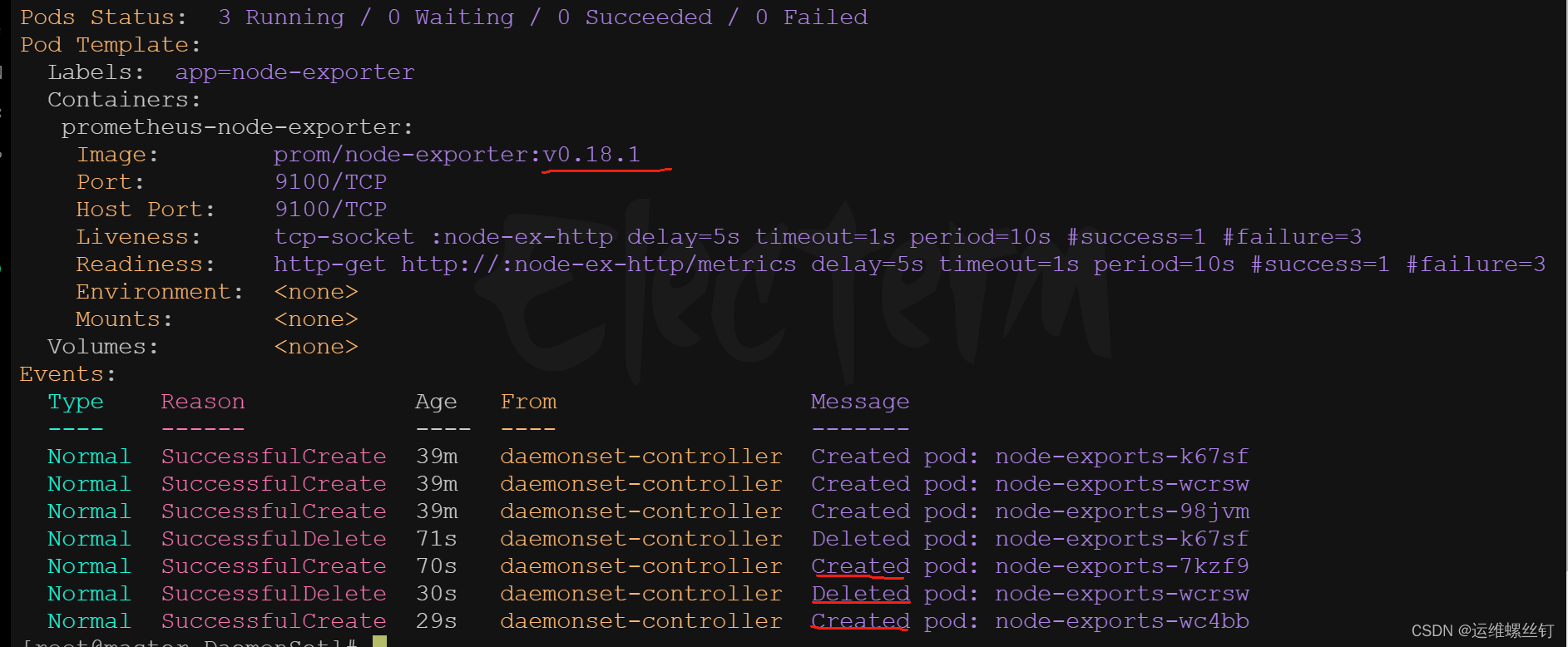

安装默认的 RollingUpdate 策略,node-exports-ds 资源将采用一次更新一个Pod对象,待新建Pod的对象就绪后,在更新下一个Pod对象,直到全部完成。
2、DaemonSet的更新策略——OnDelete
-
1、将此前创建的node-expoter中的pod模板镜像更新为 prom/node-exporter:v1.3.1,由于升级版本跨度过大,无法确保升级过程中的稳定性,我们就不得不使用 0nDeLete 策略来替换默认的RollingUpdate 策略
-
2.由于 0nDelete 并非自动完成升级,它需要管理员手动删除Pod,然后重新拉起新的Pod,才能完成更新。 (对于升级有着先后顺序的软件
这种方法就非常的有用;) -
OnDelete的使用类型
kubectl explain daemonset.spec.updateStrategy.type

apiVersion: apps/v1
kind: DaemonSet
metadata:
name: node-exports
namespace: default
spec:
minReadySeconds: 10 ## 更新时间,默认是0秒
revisionHistoryLimit: 20 ## 回滚次数
updateStrategy: ## 更新策略
rollingUpdate:
type: OnDelete ##更新策略为OnDelet
selector:
matchLabels:
app: node-exporter
template:
metadata:
labels:
app: node-exporter
spec:
hostNetwork: true ##共享主机网络
hostPID: true ##获取主机的PID
containers:
- name: prometheus-node-exporter
image: prom/node-exporter:v1.3.1
ports:
- name: node-ex-http
containerPort: 9100
hostPort: 9100
##存活探测和就绪探测
livenessProbe:
tcpSocket:
port: node-ex-http ##存活探测,探测port的name其实就是探测端口9100
initialDelaySeconds: 5 ##存活探测时间为5秒
readinessProbe:
httpGet:
path: '/metrics' ## 就绪探针,这是一个固定的接口
port: node-ex-http ## 就绪探针探测port的name其实就是探测端口9100
initialDelaySeconds: 5 ## 就绪探针时间为5秒
- 发现应用yaml文件后,image并没有发生变化

- 通过删除pod 重新创建,会重新自动建立新的镜像的pod
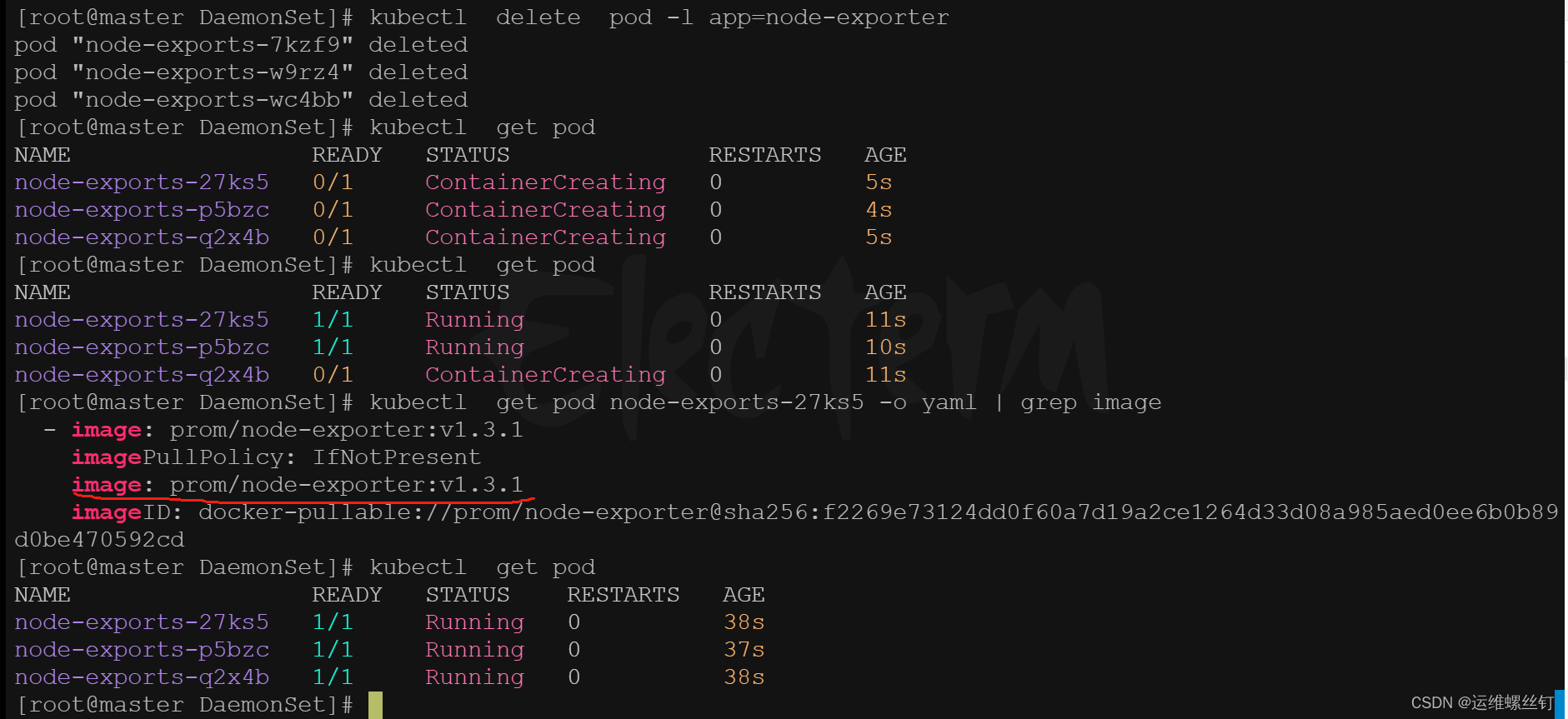
- 相关命令
kubectl get pod -l app=node-exporter ## 根据标签进行相关pod的查看
kubectl get pod <pod-ID> -o yaml | grep image ## 查看pod的镜像
kubectl delete daemonset -l app=node-exporter ##根据标签进行pod删除

